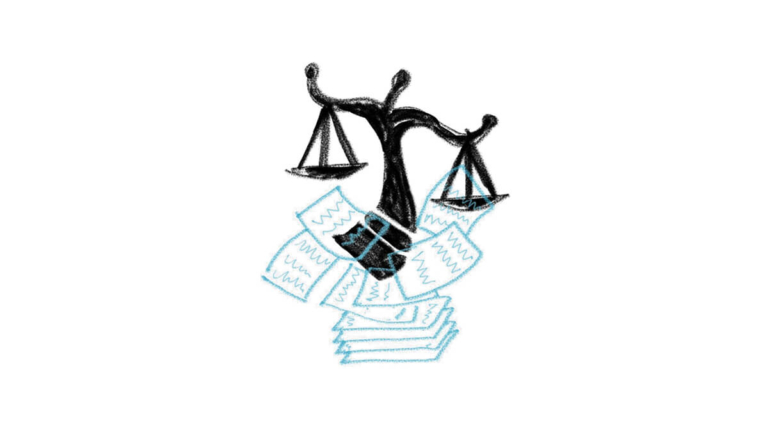Casebook Info
A Pacific Islander, Teitiota, and his family sought refuge in New Zealand from rising sea levels and other life-threatening climate change impacts. The New Zealand courts rejected Teitiota and deported him along with his wife and three children. Teitiota then turned to the U.N. Human Rights Committee, arguing that New Zealand had violated his right to life.
In a ground-breaking decision, the Human Rights Committee recognized that countries have an obligation to not deport noncitizens to countries where their lives are at risk from climate change. However, the Committee determined that Teitiota did not face sufficiently serious threats to his life, setting a dangerously high— almost unattainable—bar for displaced peoples. The Committee’s decision marks an important first step in the advancement of climate displacement rights.
- Year Filed 2015
- Year of Most Recent Ruling 2020
- Year of Final Ruling 2020
- Jurisdiction International
- Court Name United Nations Human Rights Committee (UN HRC)
- Primary Focus Displacement
- Ruling On Merits
- Plaintiff(s) Ioane Teitiota
- Respondent(s) New Zealand
- Outcome N/A
- Organizational leader of the litigation N/A
- Link to the decision/ruling
Background
In 2013, Ioane Teitiota applied for asylum in New Zealand on the basis that climate change had forced him to flee his home on the Pacific island nation of Kiribati. He argued that climate change impacts on his island posed a serious risk to his life, such that he had no choice but to leave.
Kiribati, a collection of 33 small Pacific islands, is one of the countries most vulnerable to climate change. The country’s low-lying islands face an existential threat from sea level rise— no land in Kiribati rises more than three meters above the ocean. Some small islands have already been inundated by water, and other islands are losing land to erosion and advancing tides. This has forced an increasing number of Kiribati people to move to Tarawa, Teitiota’s home island and the capital of Kiribati. Intruding sea water threatens the nation’s freshwater and agriculture, and serious flooding has become more frequent.
Facing overcrowding, a scarcity of freshwater and food, increased violence, and the threat of increasingly destructive climate events, Teitiota fled to New Zealand. He applied for asylum, seeking the world’s first recognition as a climate change refugee. Teitiota and his wife explained that he and his family faced significant hardship on Tarawa. Their well became contaminated with salt and their crops were destroyed by salt water intrusion. As Teitiota put it, “I’m the same as people who are fleeing war. Those who are afraid of dying, it’s the same as me.”
Rejected and Deported by New Zealand
The New Zealand Immigration and Protection Tribunal rejected Teitiota. Applying international refugee law, the Tribunal concluded that he was not at risk of persecution by the Kiribati government, since the general population was facing the same impacts from environmental degradation (NZIPT Decision, ¶75). The Tribunal also determined that the Government of Kiribati did not fail to take steps to protect Teitiota from environmental harm. On appeal, the High Court, Court of Appeals, and Supreme court each affirmed the Tribunal’s decision. However, in a nod to future applicants, the New Zealand Supreme Court acknowledged that in narrow circumstances “environmental degradation resulting from climate change or other natural disasters” could “create pathways into the Refugee Convention or protected person jurisdiction” (NZSC Decision, ¶13). The New Zealand government subsequently deported Teitiota back to Kiribati in 2015.
Having exhausted his domestic remedies, Teitiota turned to the U.N. Human Rights Committee (HRC), which is responsible for monitoring the implementation of the International Covenant on Civil and Political Rights (ICCPR). He submitted a complaint to the HRC, arguing that New Zealand had interfered with his right to life— as guaranteed under Article 6(1) of the ICCPR— by denying him protection in New Zealand.
Teitiota explained that, since returning to Kiribati, his family had experienced health issues from the lack of clean drinking water. One of his children suffered a “serious case of blood poisoning, which caused boils all over his body” (HRC Decision, ¶5). Teitiota and his family were also unable to grow crops since returning (¶5). In his complaint, Teitiota pointed to the Fifth Assessment Report of the Intergovernmental Panel on Climate Change, which states that Kiribati faces an existential threat if global temperatures and sea levels continue to rise.
Teitiota Advances Climate Refugee Law
In its 2020 decision, the HRC advanced the landmark argument that persons displaced by climate change may be protected under the ICCPR. The Committee wrote:
“The obligation not to extradite, deport or otherwise transfer, pursuant to article 6 of the Covenant, may be broader than the scope of the principle of non-refoulement under international refugee law, since it may also require the protection of [noncitizens] not entitled to refugee status.”
(HRC Decision, ¶9.3)
In other words, noncitizens may be protected from deportation if their lives would be threatened by climate change when deported to their country of origin. Explaining that the right to life should be understood broadly, the Committee noted that climate change presents one of the “most pressing and serious threats to the ability of present and future generations to enjoy the right to life” (¶9.4). These threats to life can come from sudden onset events, such as extreme storms, or slow-onset events, such as sea level rise and salinization (¶9.11).
However, the HRC stopped short of finding that New Zealand violated its human rights obligations. The Committee stated that there is a “high threshold” to qualify for protection under Article 6 of the ICCPR (¶9.3). There must be a reasonably foreseeable risk of irreparable harm facing the noncitizen upon return to their country of origin. In this case, the Committee concluded that there was not a “reasonably foreseeable risk that [Teitiota] would be exposed to a situation of indigence, deprivation of food and extreme precarity that could threaten his right to life, including his right to a life without dignity” (¶9.9). The Committee accepted that “sea level rise is likely to render Kiribati uninhabitable” within 10 to 15 years, but felt that “intervening acts by Kiribati, with the assistance of the international community” could effectively protect or relocate Kiribati’s population. However, it is difficult to imagine that countries will engage in large-scale humanitarian relocation in the future given their efforts to keep out refugees and immigrants. It may be that will best occur through legal protections in the asylum system.
Two Committee members dissented from the decision in support of Teitiota’s claim. Duncan Laki Muhumuza argued that the conditions in Kiribati are “significantly grave, and pose a real, personal and reasonably foreseeable risk of threat to [Teitiota’s] life” (HRC Decision, Annex I ¶1). Muhumuza emphasized that Teitiota’s difficulty accessing fresh water should be enough to warrant international protection, since it would be absurd to protect the right to life by waiting for a considerable number of people to die. Vasilka Sancin further reiterated this point in her dissent. She critiqued New Zealand and the HRC for not providing evidence that Teitiota actually could access safe drinking water, arguing that this burden ultimately lay on New Zealand.
- 119,438 people live in Kiribati (2020 Census)
- 60% Percentage of the Kiribati population that receives rationed water
- 10-15 years The amount of time before Kiribati becomes uninhabitable
- 1.2 billion people could be displaced by climate change within the next 30 years (Institute for Economics and Peace)
Strategies
Applying a developed body of law in the context of climate change

Given the absence of legal protections for people displaced by climate change, Teitiota creatively argued that international refugee law should protect him from life-threatening climate change impacts. He asserted that “environmental refugees” qualify for protection under the Refugee Convention, pushing for a broad understanding of refugee law. Teitiota also relied on established law on the right to life. He framed the threats of climate change as just another kind of risk to life, such that the courts and HRC would see the extension to climate change as natural and reasonable. This case illustrates the ways that advocates creatively build on established law when there is climate specific law to rely on.
Centering rights

Teitiota centered his right to life throughout the litigation of his case. Refugee and immigration law often avoid a rights-based framing, though the law does confer rights on asylum-seekers. The Refugee Convention itself places an obligation on states to not deport refugees, rather than explicitly granting refugees a right to not be deported (Art. 33). However, Teitiota presented his deportation as a rights violation, which ultimately led the HRC to advance a new understanding of the rights of climate-displaced persons.
Takeaways
The right to life may offer protection to persons and communities displaced by climate change. Refugee and immigration law does not currently protect persons displaced by climate change, despite the fact that climate change is already forcing many people from their homes and is predicted to displace large numbers of people in the future. This decision from the HRC establishes that the right to life may fill this gap in refugee law by providing an extra layer of protection against deportation to climate vulnerable areas. It also underscores the threat that climate change poses to human lives and human rights in the present and near-term.
Countries and international bodies are still reluctant to recognize the seriousness of current climate change impacts and climate displacement. While serving as an important legal development, the HRC decision also sets a high threshold for protection of persons displaced by climate change. As argued by the dissenting Committee members, the HRC decision failed to take seriously the accelerating and dangerous climate change impacts being felt on Kiribati. This thinking seems to mirror the thinking of governments, such as the New Zealand government, who have been reluctant to acknowledge the human rights violations currently occurring as a result of climate change. The Committee’s decision seems to imply that Kiribati citizens will have a right to international protection only when their islands are swallowed by the sea or they entirely lose access to fresh water.
Impacts
The Human Rights Committee’s decision has been hailed as a ground-breaking advancement in human rights law. It marks the first acknowledgement that climate-displaced peoples are entitled to international protection. While not binding law, the decision sets important precedent for courts and governments on how climate displacement may fit into the human rights legal landscape. It sets out a legal pathway that will likely be pursued by other advocates and displaced peoples as they cite to the Committee’s decision. The reasoning in the decision may also be applied to other human rights that are threatened by climate change, such as the right to family life and family unity. International human rights bodies often play an important role in shaping legal and moral norms, which governments eventually adopt as binding law. The HRC decision may be a significant first step in the development of a new norm on the international protection of persons displaced by climate change.
Teitiota’s case has also brought much-needed attention to the issue of climate change displacement. The politically charged issue has been largely sidelined in international climate change negotiations and climate advocacy. By thoroughly litigating his case up to the HRC, Teitiota highlighted the experience of climate-displaced peoples around the world. The HRC decision also formally legitimizes climate change displacement as a human rights concern, which lays an important foundation for further human rights advocacy on the issue.
